Introduction
K-pop has exploded in popularity worldwide, captivating audiences with its infectious beats, synchronized dance moves, and stunning visuals. But behind the glitz and glamour lies a world of fascinating facts that reveal the dedication, perseverance, and unique culture that shape this vibrant industry. Get ready to have your mind blown with these 15 astonishing K-pop revelations.
Top 15 Mind-blowing Facts about K-pop
- Trainee periods can last for years, even a decade.
- K-pop idols adhere to strict diets and beauty standards.
- Fan culture is incredibly organized and devoted.
- K-pop choreography is notoriously complex and demanding.
- South Korea’s music industry is meticulously structured.
- Many K-pop idols are multilingual.
- Mental health struggles are prevalent within the industry.
- “Aegyo” (acting cute) is a popular concept in K-pop.
- Plastic surgery is common among K-pop stars.
- K-pop groups often have designated “concepts.”
- Lightsticks are a hallmark of K-pop fandoms.
- K-pop has broken numerous world records.
- The industry has influenced South Korea’s global reputation.
- K-pop idols often have “no dating” clauses in their contracts.
- The K-pop industry generates billions of dollars for the South Korean economy.
Fact 1. Trainee Life: Years of Dedication Before Debut
Before gracing the stage as polished stars, K-pop idols undergo rigorous training programs that can last for several years, sometimes even a decade. This period is a crucial stepping stone where aspiring idols hone their singing, dancing, and rapping skills. Training companies invest heavily in their trainees, providing them with vocal and dance lessons, rapping coaches, and even language classes. Many companies also enforce strict diets and physical conditioning programs to ensure the idols maintain a certain image.
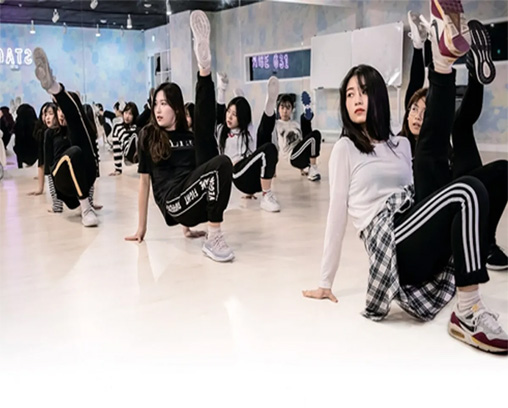
This extended training period serves a dual purpose. It allows companies to assess the potential of their trainees and identify those with the talent, stamina, and star quality to succeed in the competitive K-pop industry. It also instills a strong work ethic and discipline in the trainees, preparing them for the demanding schedules and rigorous routines they’ll face once they debut.
Fact 2. Beauty Standards and the Pressure to Conform
The K-pop industry is known for its emphasis on visuals. Idols are expected to maintain a specific aesthetic that often aligns with Korean beauty standards. This can include having flawless skin, a slim figure, and certain facial features considered desirable in Korea.
To achieve this look, many K-pop idols adhere to strict diets and exercise routines. Some companies even enforce weight restrictions and have stylists who ensure the idols maintain a certain image. While some idols achieve this look naturally, plastic surgery is also a common practice within the industry.
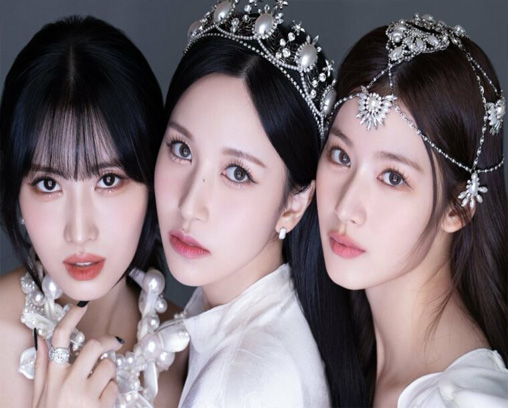
The pressure to conform to these beauty standards can be immense, leading to body image issues and mental health struggles for some idols. However, there’s a growing movement within the K-pop scene promoting body positivity and self-acceptance, which is a welcome change.
Fact 3. K-Pop Fandoms: A Force to Be Reckoned With
K-pop fandoms are legendary for their organization, dedication, and global reach. Fans often form online communities where they share their love for the groups, create fan art and videos, and organize projects to support their idols. These projects can range from voting for awards to crowdfunding for music videos or physical albums.

The dedication of K-pop fandoms extends beyond the virtual world. Fans often organize elaborate projects at concerts, synchronizing lightsticks, fan chants, and even outfits to create a dazzling spectacle. Their unwavering support plays a significant role in the success of K-pop groups, propelling them to international fame and breaking numerous records.
Read More: 15 Fascinating Facts That Will Change How You See the Music Industry
Fact 4. Pushing the Limits: The Demanding World of K-Pop Choreography
K-pop choreography is renowned for its complexity, synchronization, and sheer athleticism. These routines often combine intricate dance moves with powerful formations and require a high level of stamina and coordination from the idols. To achieve this level of precision, K-pop groups spend countless hours practicing, learning the choreography from professional dancers and refining it until it becomes flawless.
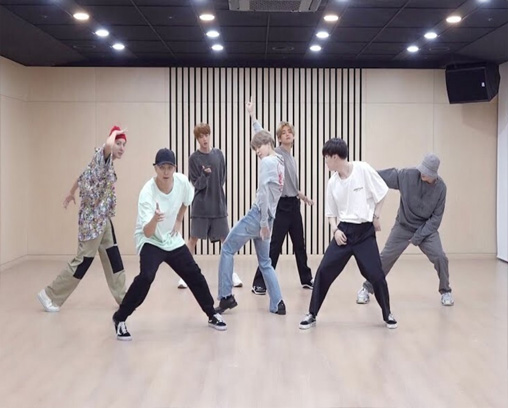
The demanding nature of K-pop choreography can come at a cost. Injuries are not uncommon, and the pressure to perform flawlessly can lead to physical and mental strain on the idols. However, the dedication and skill displayed by K-pop dancers continues to push the boundaries of what’s possible, creating visually stunning performances
Fact 5. The K-pop Machine: A Structured Industry
South Korea’s music industry functions like a well-oiled machine, with a systematized process from talent recruitment to global stardom. Entertainment companies hold auditions worldwide, scouting for potential stars with exceptional talent and charisma. These trainees enter the rigorous training system, preparing for their debut with top-notch vocal training, dance coaching, and lessons on media presence.
Once a trainee debuts as part of a K-pop group, their every move becomes meticulously managed. The company creates the group’s image, carefully curates their music releases, and schedules a packed itinerary of music shows, concerts, variety appearances, and promotional events. This tightly controlled environment ensures maximum brand exposure and fan engagement.
Fact 6. Multilingual Stars: Breaking Language Barriers
Many K-pop idols are multilingual, a skill that’s incredibly valuable in an industry aiming for global reach. It’s common to find members fluent in Korean, English, Japanese, and sometimes even Mandarin, enabling them to communicate effectively with fans around the world.
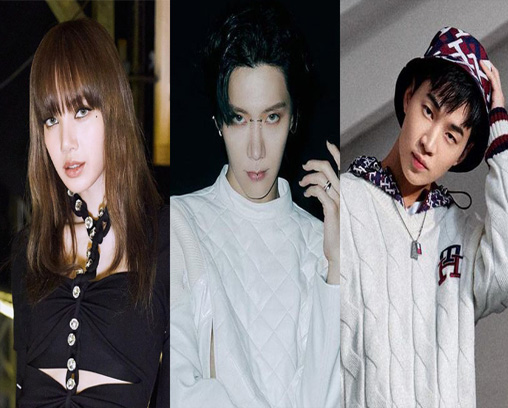
Companies often recruit trainees from other countries, adding diversity and multilingual talent to the K-pop scene. Additionally, it’s increasingly common for K-pop idols to learn foreign languages to connect deeper with their international fan bases, breaking language barriers and promoting cultural exchange.
Read More: The 15 Most Astonishing Hollywood Facts You Won’t Believe
Fact 7. Beyond the Glitz: Mental Health Struggles
Behind the vibrant performances and upbeat music, many K-pop idols grapple with mental health challenges. The unrelenting pressure to succeed, harsh criticism from netizens, grueling schedules, and invasion of privacy can take a significant toll.

Mental health remains a relatively taboo topic in South Korea; some idols are reluctant to seek help due to the stigma attached. However, the industry is gradually acknowledging the importance of addressing mental health, with some companies providing counseling and resources for their artists. There’s a growing awareness of the need for open conversations about mental health within the K-pop community.
Fact 8. Aegyo: The Power of Cuteness
“Aegyo” is a defining characteristic of K-pop culture, referring to the display of exaggerated cuteness through childlike expressions, gestures, and vocal inflections. Both male and female idols frequently utilize aegyo in music videos, variety shows, and fan interactions.

The appeal of aegyo lies in its ability to charm and endear fans. It creates a sense of approachability and often contrasts with the idols’ powerful onstage persona, showcasing their multifaceted personalities. However, there’s also a fine line between charming aegyo and a forced performance, and the overuse of aegyo can sometimes elicit mixed reactions.
Fact 9. Plastic Surgery: A Controversial Norm
While K-pop idols generally possess natural beauty, plastic surgery is a prevalent practice within the industry. Procedures like double eyelid surgery, nose jobs, and jawline reshaping are among the most common, aimed at achieving a specific aesthetic aligned with Korean beauty standards.
The topic of plastic surgery in K-pop circles remains a sensitive one. Some fans openly acknowledge and accept it, while others criticize the culture of altering one’s appearance. It’s essential to remember that the decision to undergo plastic surgery is ultimately a personal one, and it’s vital to prioritize respect and avoid perpetuating unrealistic beauty standards
Fact 10. K-pop Concepts: Crafting a Unique Image
K-pop groups often embrace designated “concepts” that dictate their musical style, visuals, and overall image. These concepts range from cute and bubbly to dark and edgy, offering a diverse spectrum for fans to choose from. Some popular concepts include “school uniform,” “girl crush,” “retro,” and “futuristic.

A group’s concept can evolve over time, keeping their image fresh and allowing them to explore different sides of their artistry. Entertainment companies strategically select concepts that they believe will resonate with the target audience and differentiate the group from the competition.
Read More: From Flop to Favorite: 15 Movies That Were Initially Hated
Fact 11. Lightsticks: The Symbol of K-pop Fandoms
Lightsticks are an iconic symbol of K-pop fandom culture. Each K-pop group has its own unique lightstick with a specific design and color scheme. At concerts, fans create a breathtaking “ocean” of lights by synchronizing their lightsticks, demonstrating unity and support for their idols.

Lightsticks go beyond just being a source of illumination at concerts. They represent a deep connection between the idols and their fans, serving as a tangible representation of belonging to a dedicated community.
Fact 12. Record Breakers: K-pop’s Global Dominance
K-pop has shattered numerous world records, solidifying its immense global influence. Groups like BTS have repeatedly broken YouTube viewership records, amassing billions of views for their music videos. They’ve also topped the Billboard charts and sold out stadiums worldwide, demonstrating their unprecedented international reach.
The success of K-pop artists on social media further underscores their global popularity. Fan-created content and trending hashtags spread K-pop culture beyond borders, amplifying the visibility of K-pop groups and contributing to their record-breaking achievements.
Fact 13. K-pop Power: Elevating South Korea’s Global Image
The astronomical rise of K-pop has played a significant role in transforming South Korea’s global reputation. It has put the country on the map, boosting tourism and generating interest in Korean culture as a whole. K-pop has become a driving force within the “Hallyu Wave” (Korean Wave), which encompasses the surge in popularity of Korean dramas, films, food, and fashion around the world.
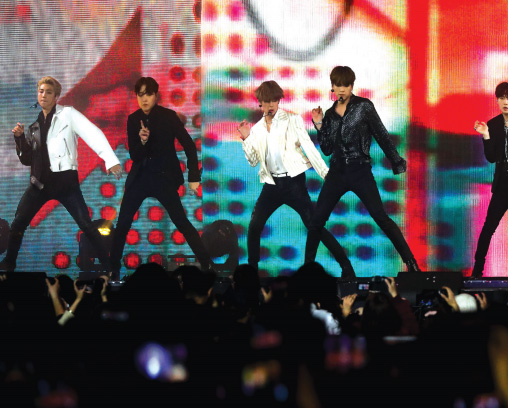
South Korea’s government has recognized the tremendous potential of K-pop as a form of soft power, investing in cultural exports and supporting initiatives to promote the industry internationally.
Fact 14. “No Dating” Clauses: Restrictions on Personal Lives
It’s not uncommon for K-pop idols to sign contracts with their agencies that include “no dating” clauses. These clauses often restrict idols from having public romantic relationships for a predetermined period, sometimes extending for several years.

Entertainment companies cite various reasons for these restrictions. They believe it allows idols to maintain a certain image and focus solely on their careers. It also serves to prevent fan backlash and potential scandals that could damage the artist’s or group’s reputation. While these clauses are common practice, they remain a highly debated topic, with some criticizing the strict control over idols’ personal lives.
Fact 15. K-pop’s Economic Impact: A Billion-Dollar Industry
The K-pop industry is a major economic force, generating billions of dollars in revenue for the South Korean economy. The sale of albums, concert tickets, merchandise, and endorsements contribute significantly to this lucrative industry. Furthermore, K-pop’s popularity drives tourism, as fans travel to South Korea to visit iconic filming locations and attend concerts and fan events.
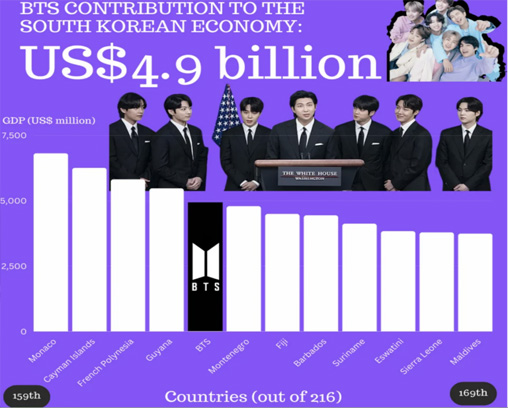
The government of South Korea recognizes the economic power of K-pop, investing in it as a vital cultural export. This includes funding for training programs, music production, and promotional initiatives. The K-pop industry has become an inseparable part of the South Korean economy, creating jobs and contributing to the country’s overall prosperity.
Conclusion:
K-pop’s allure extends far beyond its catchy melodies and dazzling visuals. Behind the scenes lies a world of rigorous training, intense competition, and a unique cultural force that has taken the world by storm. While the K-pop industry undoubtedly creates immense joy for its global fans, it’s equally important to acknowledge the complexities surrounding the lives of idols and the challenges they navigate. As K-pop continues to break boundaries and evolve, it’s fascinating to see where this cultural phenomenon will take the world next.
15 FAQs( Most Asked Questions):
-
What is the hardest thing about being a K-pop idol?
The most challenging aspect of being a K-pop idol is likely the intense pressure to succeed. This pressure manifests in numerous ways, including long training periods, demanding schedules, the constant scrutiny of public image, and the need to maintain a certain level of perfection in all performances.
-
Do K-pop idols get paid well?
The income of K-pop idols varies significantly. Some top-tier groups earn substantial amounts, while others barely make ends meet. Factors like group popularity, company policies, and individual contracts all play a role in determining an idol’s salary.
-
Why are K-pop fans so devoted?
K-pop fandoms are known for their incredible dedication. This stems from the strong bond fans feel with their idols due to active social media presence, reality shows, and fan engagement events. These strategies create a sense of connection and belonging within the fandom, fostering loyalty and enthusiastic support.
-
How is K-pop different from Western pop music?
While there are common elements in both genres, K-pop stands out with its emphasis on elaborate choreography, the concept system, the trainee system, and the highly organized fandom culture.
-
Is it hard to become a K-pop idol?
Becoming a K-pop idol is incredibly challenging. It requires natural talent, years of rigorous training, and unwavering determination to break into the competitive industry. Even after debuting, there’s no guarantee of success, making it a path that involves hard work and perseverance.
-
Can non-Koreans become K-pop idols?
Yes! While the industry was initially dominated by Korean idols, there’s a growing number of international idols from countries like China, Japan, Thailand, and even the United States. Companies actively recruit trainees from around the world.
-
What is the age range for K-pop idols?
Many K-pop idols begin training in their early teens and debut in their late teens to early twenties. However, there’s no strict age limit, and some idols debut even in their mid-twenties.
-
What are some of the biggest K-pop companies?
The “Big 3” K-pop entertainment companies are SM Entertainment, YG Entertainment, and JYP Entertainment. Other notable companies include HYBE Labels (formerly Big Hit Entertainment), Cube Entertainment, and Starship Entertainment.
-
Do K-pop groups write their own songs?
The level of involvement K-pop groups have in songwriting varies. Some groups actively participate in the songwriting and production process, while others primarily perform songs written by their company’s in-house producers. There’s a growing trend toward idols becoming more involved in the creative aspect of their music.
-
Why is K-pop so popular?
K-pop’s popularity stems from a combination of factors: catchy melodies, synchronized choreography, stunning visuals, the meticulously crafted image of the idols, active social media engagement with fans, and dedicated global fandoms.
-
What does it mean to be a trainee?
Being a trainee involves years of intense training in singing, dancing, and rapping. Trainees also receive language lessons, media training, and adhere to strict diets and lifestyle regulations.
-
How long do K-pop groups usually last?
Many K-pop groups are bound to a standard 7-year contract with their entertainment company. After this period, groups might renew their contracts, disband, or some members might pursue solo careers.
-
What does “stan” mean in K-pop?
The term “stan” is a combination of the words “stalker” and “fan” in the Eminem song “Stan”. In K-pop culture, it refers to being a particularly devoted and passionate fan of an idol or a group.
-
Are K-pop idols friends with each other?
Yes! Many K-pop idols from different groups develop friendships, especially those who trained together or overlap during promotional periods.
-
Where can I learn more about K-pop?
There are countless resources available online to delve deeper into the world of K-pop. Popular YouTube channels dedicated to K-pop news and analysis, fan-run websites, and official social media accounts of groups provide an abundance of information.




